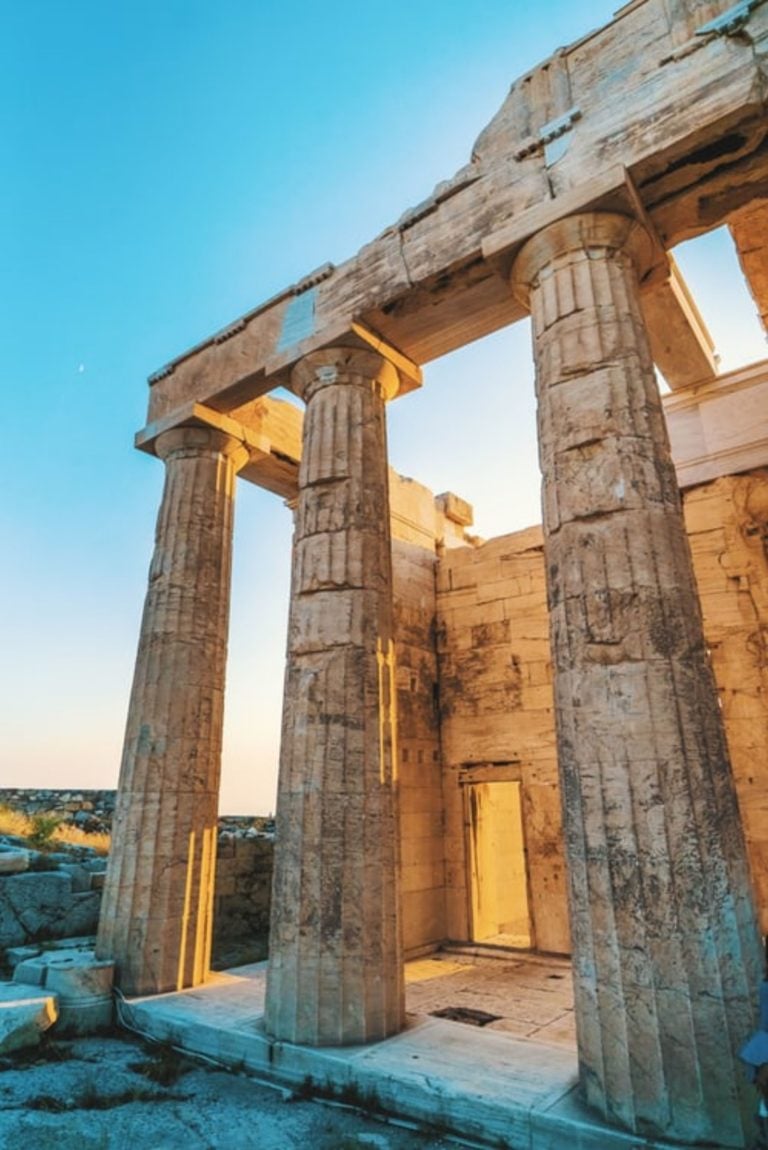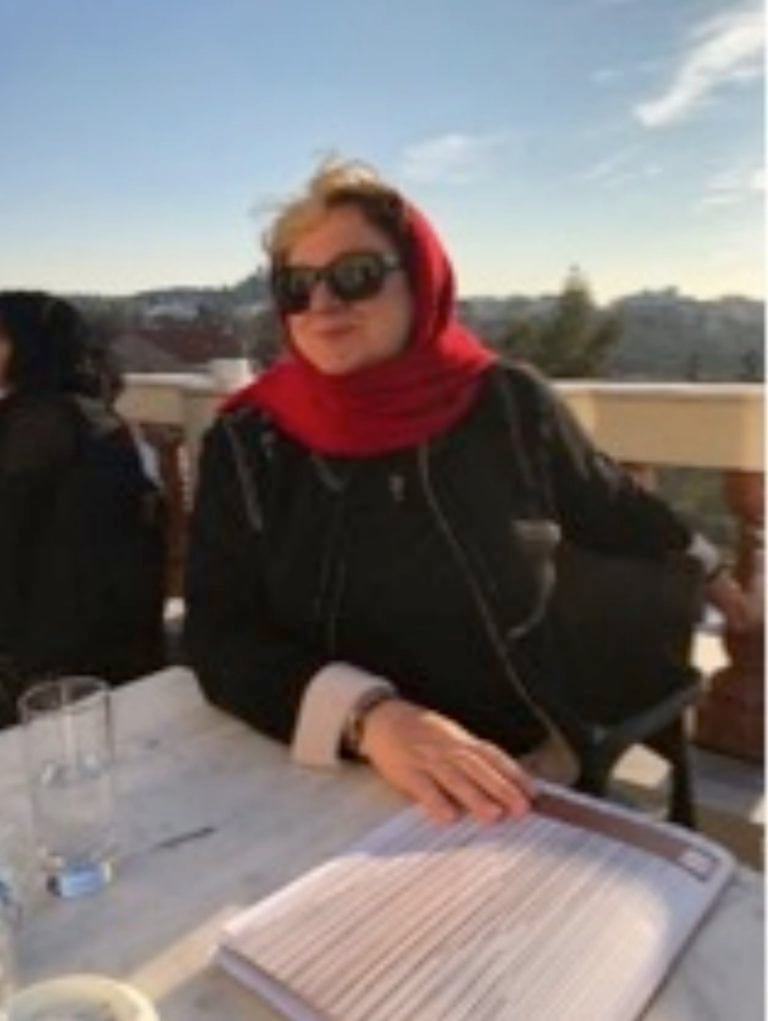My journey to Athens as part of the Athens Burns Bright Tour: A Cultural Ecology Tour carried a previous awareness. I was coming from a country far away to a place that I had a connection to but also a disconnection.
It was like visiting a tiny house in a very long street in an unknown suburb. It was a sense of having just one breath, or one taste, it was a drop in the ocean, a perpetual anxiety around lack of sufficient time to see, think and feel – it was profoundly stimulating, overwhelming and frustrating. Like looking at a loved one on a station platform as the train pulls away.
There was an inspirational element. Anticipation and suppressed excitement knowing that colleagues and professionals in the field of the visual, performing arts, curatorship and arts policy and administration I knew or of, were also to join the tour. There is no other way of describing the potential collegiality, of being in a mix of Australians and others from different countries to share the experience of Athens. There was also the presence of Australian Greek colleagues on the tour, there to make personal reconnections and seek creative collaboration.
Where do I sit with a country and a culture in which, either for good or bad, ‘there but for the wheel of immigration go I’? My parents oft repeated a cultural aphorism and I kept reminding myself that ‘one cannot go from this skin into that of another’. Yet, the Greek contingent on the tour along with thousands of second and third generation Greeks are travelling there and expressing desires to rekindle connections in a post-migration, post-austerity context.
Why now? Why Athens?
The underbelly of this city is one of energy; it is contagious, youthful and open to innovation and investment. It no longer seems that strangers to the city of Athens need to be or are considered, xeni, foreigners. Athens Burns Bright offers an imaginative incentive for creative practitioners, the potential to work in a new and open fluid context with Athenian cultural institutions and individuals in future exchanges.
The Crisis has amplified and made more apparent and intense the skills, ingenuity, independence and capabilities of artists, and creative producers in Athens.
Athens now a hub of artists from across the European Union, Turkey, Middle East, Asia, and North America, and Greek Diaspora, has born new international approaches to small and large creative projects.
Key figures that provided information and leadership for Tour such as Barbara Dukas, a former producer for the National Theatre of Greece and now Artistic Director of the Kefalonia (Corfu) Theatre Festival, invited us to engage with festivals and projects. We could see approaches to the major philanthropic organisations for proposals and others with an arts and administrative background saw they could employ their skills within a new post-crisis Greece.
READ: Travels to Greece: The magic of the Pelion Peninsula
The program was compressed into five intense days covering a wealth of cultural activity, places and people. It included interface with key players in the Athenian and international landscape of theatre practice and administration, visual art, street theatre, street art and contemporary performance.
Importantly we analysed the local role of state and city arts subsidy alongside the work of key Greek philanthropic institutions. Each of those organisations had very specific, as well as public service and community agendas.
This overview doesn’t take account of the grass roots, self-supported groups and cohorts of active practitioners working hard to cut a place within their field without promise of reward or recognition outside their peer groups.
Every spare wall or siding or shop frontage or café notice board was papered thick with dynamic posters advertising events. The design of these posters and bills was in my eyes exceptional.

The program and degrees of engagement ranged from meeting with the CEO’s, directors, major philanthropic organisations such as the Onassis Cultural Foundation Stegi and the Niarchos Cultural Foundation, in board rooms, theatrical and public venues. The tour traverses architectures and audience spaces dated from 500 BCE, to 400 years of Ottoman occupation and then 19th Century imposed foreign monarchies which created architecture reflecting classical Western European imperial visions of a new national Greece.
We saw performances in all the main sectors and shared food and conversation with practitioners. With every artistic form of expression, we encountered generosity and a willingness to engage. Underlying all of this was an evident passion and commitment that drove cultural and creative practices.
As arts related practitioners we brought shared concerns like; how do we continue to support and fund the arts under pressure in our own fields in Australia? Particularly when we were looking at Athens, a city and an arts community that has had a decade of intermittent funding, and its citizenry burdened by a decade of by economic austerity?
Creativity as a counter to austerity
The Australian experience of arts funding is that economic rationalism always feels compelled to ratchet up a notch tighter. In Athens, the recession was devastating.
Over 500,000 middle-class and educated, skilled Greeks left – the largest modern emigration since then post war period. Things are better, much of it driven by the resilience of its people and fundamental changes to the Greek-way of doing things.
The Crisis has amplified and made more apparent and intense the skills, ingenuity, independence and capabilities of artists, and creative producers in Athens. Athens energy dwells in the topography, the rock and the city over which the edifices still presides. Ancient Athens, always present, the 19th century quarters, the old-working class neighbourhoods now hip – all rub shoulders with ageing buildings, tired infrastructure and the concrete apartments born of rapid-burst urbanisation from 1956 to 1970, when over 3 million Greeks migrated from the country into Athens.
The squares tremble daily with the journeys of tourists, yet they hold their own. In each precinct, and just below the surface, lie the multiplicities of Athens’ defeats, its aeons of creativity, growth, destruction, invasions, civil wars – of histories that have sought to shape an identity too often seeing its alienation in political schism and displaced others.
Athens in austerity may have become an old market town again, in the pre-modern sense, to survive. There is division over what that should be – an open market will bring everyone, capitalist, imperialist, beggars, strangers (tourists), Roma, pick-pockets, refugees and other unknowns who in truth have always been there. The impossibly beautiful and remote classical past, and the below ground Byzantine chapels meld with the remnants of the old mosque in Monastiraki.
For visitors to Athens – even the returning ones – there was clamouring for other available riches. The list of museums and galleries in the city is exceptional. The suite of Benaki Museums, including the Museum of Contemporary Art and the Museum of Islamic Art is astounding. The museological and historical contrasts at every point were amazing in the historical pluralism they offer beyond simple diversity.
READ MORE: Russia’s National Geographic votes Greece as top Greek beach holiday destination

At each turn of the head old worlds crashed into modern and subsequent eras. The collecting tradition and connoisseurship of one period transforms into historical anti-linearity and fractal globalisation.
Global tourism melds them in whatever context and gives the lie to politically constructed antagonism and fixed pursuits of culture and identity. Current European political fear and engendered prejudicial anxiety about aliens and refugees and ‘others’ is today as it was pre-World War I, manufactured bureaucratic greed and paranoia of those with the greatest strength over others.
In a positive sense we need to redefine world global tourism in whatever context for what it can be rather than what its political fiscal face tells us it is.
Tourism and its index of all ‘trade’ for survival, or speculation is a collaborative process, it too is an exchange commodity of the material, cultural, and the creative built on the consuming economy.
However, the difference in the relationship of the creative arts in relation to that globalisation is unique and humanistic. It does not demand a ‘new world order’ that puts up walls and imprisons dissidents, intellectuals and artists. Rather Athens offers new human scale models of entrepreneurial collaboration across local and global communities.
In Athens the vigour that is manifested in its performative and cultural fields in intensity, richness and cohesion, makes a deep and universal statement about making and doing together to survive.
Finally, returns and returners, and the many others can be a source of healing Diasporic ruptures to form fully functional communities at home and across great distances. Athens Burns Bright is very timely in the European and global context.
For information on Athens Burns Bright Cultural Ecology Tour, visit http://www.kape.com.au/athens/athens-burns-bright.html